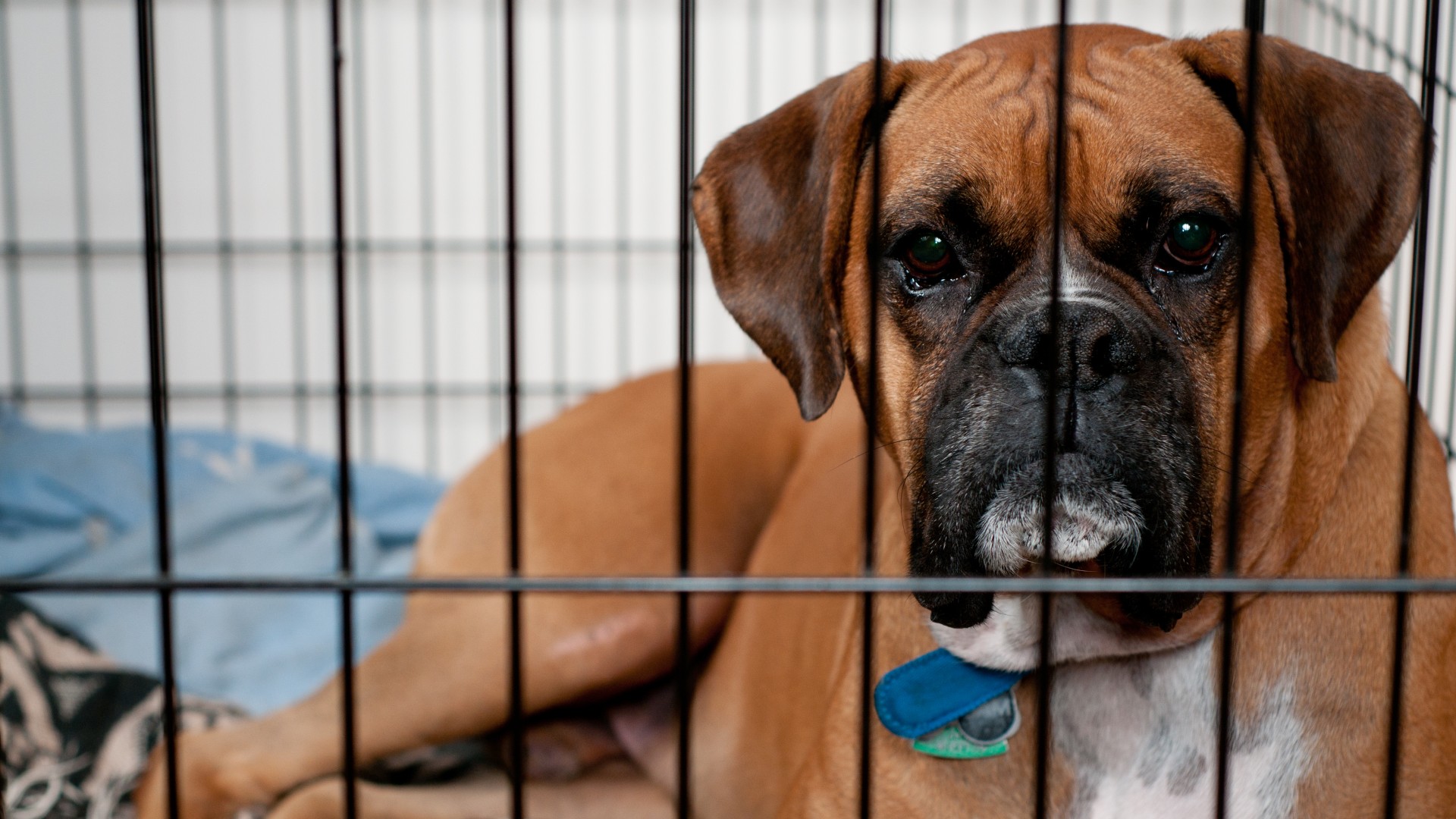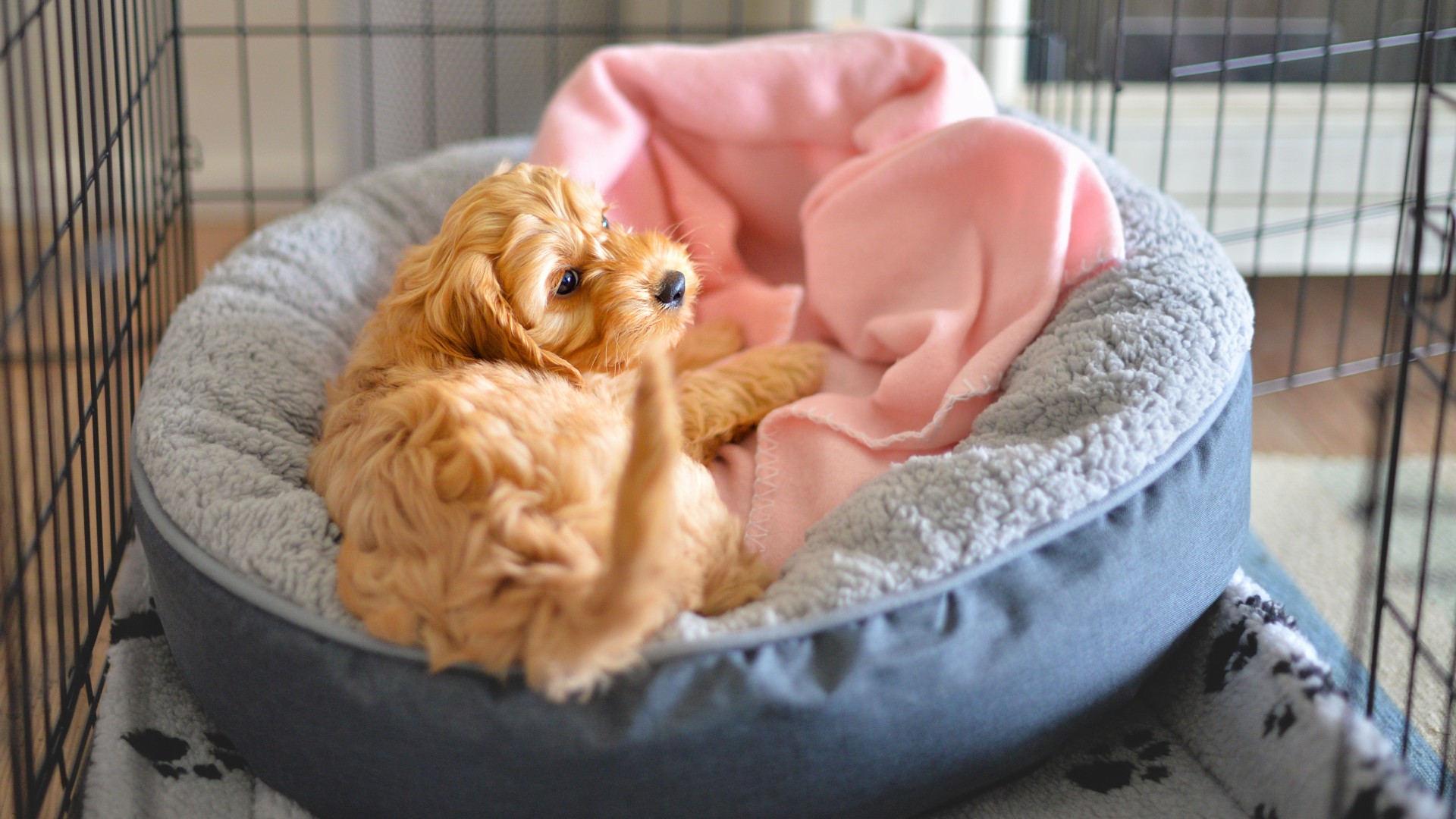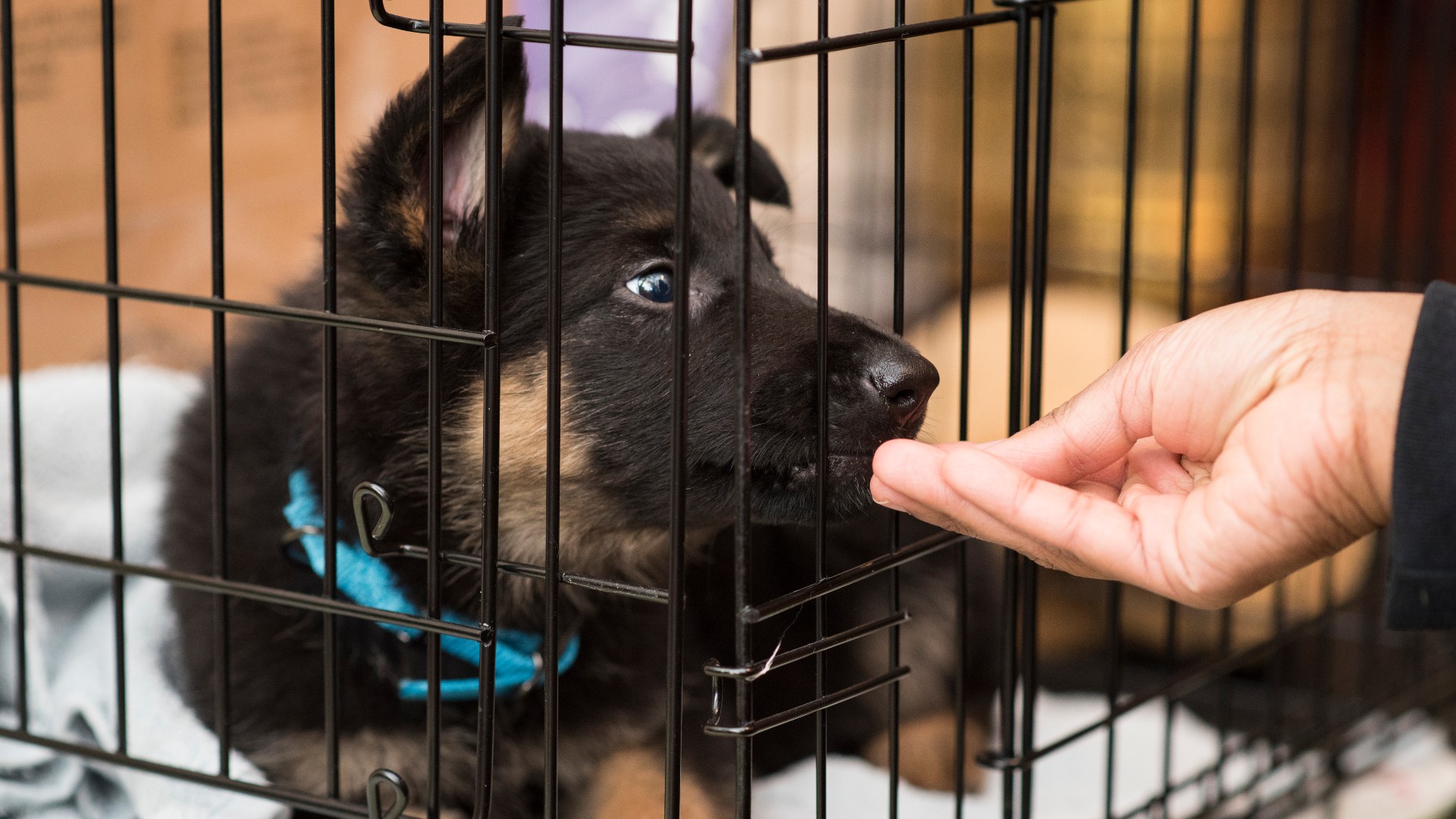How to crate train a rescue dog
These tips on how to crate train a rescue dog will help your new forever friend feel safe and secure in their new home

Learning how to crate train a rescue dog can require more time and patience than other adopted dogs and puppies due to their backgrounds, which have often involved trauma. Depending on the experiences they had before you came into their life, enclosed spaces and new people may make them feel fearful or cause them to exhibit challenging behaviors, even if you've bought them the best dog crate you could afford.
All pet parents can find themselves wondering how to crate train a dog, but it can feel like a particularly overwhelming experience if you’ve just welcomed a rescue dog into your family. While crate training a rescue dog is a big responsibility and can come with its fair share of challenges, with a few tips and tricks you’ll have your new furkid feeling confident in their new home before you know it.
Introduce your dog to their new home slowly
Before you even start to think about crate training, your rescue dog needs a chance to get to know their new environment. These dogs often come from backgrounds of abuse and neglect, so a home doesn’t always feel like a safe place for them. Their time in the shelter also means they’re likely to be used to small spaces and may find the size of their new home to be daunting.
Instead of letting your dog loose in their new home, confine them to one or two rooms and block off access to the rest of the house by using baby gates or shutting the doors. Give them some time to sniff and explore and stay with them to make sure they don’t try to chew anything.
Keep things low-key for the first few weeks after you’ve brought your rescue dog home to allow them to decompress. Shelter environments are stressful for some dogs and it can take time for them to acclimate to you and their new home.
Choose the right crate and be consistent

When selecting a create for your rescue dog, ensure you get the right fit. There should be room for them to stand up and turn around and enough space that the crate can grow with them if they’re still young.
Consistency is key for all dogs, but particularly shelter dogs who need the predictability to help them feel safe. You don’t have to stick to a routine forever, but for the first few months put your dog in their crate at set times every day and evening, so that they know what’s happening.
Rescue dogs have usually gone through significant events and changes in their lives and knowing what to expect from you helps lower their stress levels and increases resilience.
Make their sleeping space a sanctuary
All dogs want to go to sleep in a space that’s warm, cozy, and comfortable and rescue dogs are no exception. While dogs need to feel safe, furkids that have come from shelters need this more than most.
If they’ve spent a lot of time in confined spaces, a crate may make your rescue dog feel one of two things. The small area may feel familiar and therefore automatically give them a sense of security, or they may associate it with trauma and this could cause them to feel frightened.
To make it as welcoming a space as possible, invest in some of the best dog toys to make it feel less threatening. There are lots of soft and plush toys on the market that have been specially designed to help with feelings of stress and anxiety.
Choose a dog bed to go on the floor of the crate, so that your pooch has a comfy place to rest their head. If your dog is particularly unsettled, self-warming beds or those with high sides can be a great way to go as these mimic the warmth and security that a young pup feels with their mother.
Give your dog time and lots of praise

Patience really is a virtue when it comes to crate training a rescue dog. Depending on how long they spent in a shelter, they may take time to master what’s expected of them. Use the best dog treats to reinforce good behavior, verbally praise them when they get things right, and see crate training as a marathon, not a sprint.
Dr. Patricia McConnell, a Zoologist and Certified Applied Animal Behaviorist, says that three is the magic number when it comes to rescue dogs. “Repeating “three days, three weeks, three months!” is a wonderful way to remind yourself that most dogs are in shock the first three days in a new home, need three weeks to begin to show you their true personalities, and three months to begin to understand the family rules.”
PetsRadar Newsletter
Get the best advice, tips and top tech for your beloved Pets

Kathryn is a freelance writer who has been a member of the PetsRadar family since it launched in 2020. Highly experienced in her field, she's driven by a desire to provide pet parents with accurate, timely, and informative content that enables them to provide their fur friends with everything they need to thrive. Kathryn works closely with vets and trainers to ensure all articles offer the most up-to-date information across a range of pet-related fields, from insights into health and behavior issues to tips on products and training. When she’s not busy crafting the perfect sentence for her features, buying guides and news pieces, she can be found hanging out with her family (which includes one super sassy cat), drinking copious amounts of Jasmine tea and reading all the books.
